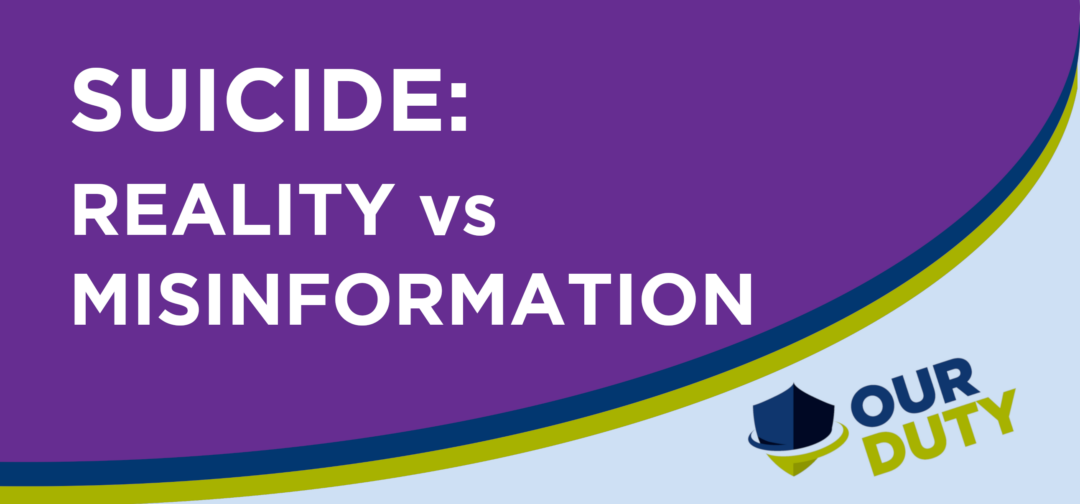Every parent of a gender questioning child has heard it said that half of all trans youth attempt suicide. This statistic is used to convince parents (sometimes in front of their child), that medical transition is not only recommended but life-saving. Many parents of gender confused teens have been told by their child’s clinician, “Better a trans daughter than a dead son (or better a trans son than a dead daughter).” Clinicians citing those alarming figures have not read the actual studies on which this claim is based.
In this large, recent, survey from Denmark, it is clear that adopting a transgender identity increases the risk of death across the board, and from suicide in particular. The truth, therefore, is the opposite of what advocates of transgenderism would have you believe. The logical conclusion from the survey’s findings is important:
You have more chance of keeping your child alive if you do not affirm an incongruent gender identity.
Erlangsen A, Jacobsen AL, Ranning A, Delamare AL, Nordentoft M, Frisch M. Transgender Identity and Suicide Attempts and Mortality in Denmark. JAMA. 2023;329(24):2145–2153. doi:10.1001/jama.2023.8627
Reality
There is no data to support the claim that puberty blockers, cross-sex hormones, or “gender-affirming” surgeries are life-saving.
- There is no record of scores of teen suicides due to gender dysphoria prior to the 2016 exponential rise in medicalization of minors seeking gender transition.
- There is no record of scores of teen suicides due to minors seeking gender transition who were unable to get treatment.
- According to Dr. Laura Edwards-Leeper, PhD, who brought pediatric gender-affirming care (the “Dutch Protocol”) from the Netherlands to the US, “As far as I know, there are no studies that say that if we don’t start these kids immediately on hormones when they say they want them that they are going to commit suicide.”
- Self harm risk among gender-nonconforming children is about the same as other children with mental health disorders.
– At the world’s largest clinic for transgender youth, the UK’s Gender Identity Development Services, from 2010-2020, only 4 out of 15,000 (<1%) minors treated or on the waitlist and unable to access services committed suicide.
– At the only Belgium Pediatric Clinic, 2.8% of trans-identifying minors completed suicide from 2007-2010.1
- Self harm risk among gender-nonconforming children is about the same as other children with mental health disorders.
- There is no record of large numbers of adults over 30 seeking to medically transition now that medical treatments are vastly more available. The dramatic rise in treatment is exclusively in minors and young adults, and primarily in females.
“…it is difficult to interpret suicide risk among people with gender dysphoria — other co-occurring psychiatric diagnoses may be more pronounced contributing factors to suicide than the fact that a person has gender dysphoria.”
National Board of Health and Welfare, Sweden, Feb 2020
There is no evidence that medical transition reduces suicide risk of trans-identifying adults; if anything, there is evidence that suicide rates increase post hormones or surgeries.
In California from 2012-2018, suicide attempt rates were twice as high after vaginoplasty or phalloplasty as before (3.3% post vs. 1.5% pre, p=0.017); rates of psychiatric emergencies were no lower during the 2 years post surgery than before surgery.
In Sweden, a country with a long history of tolerance, the longest (30-year) study of sex-reassigned adults found that compared to same birth sex controls, rates of all-cause mortality were 2.8 higher post hormones and surgeries, completed suicides 19.1 times higher, suicide attempts 4.9 times higher, and psychiatric inpatient care 2.8 times higher. Transgender mortality rate diverges sharply from that of all adults starting about 10 years post-medical intervention.
“Sometimes I just feel so sad that I did this to myself. I dealt with a lot of grief and loss and regret. … I feel full of dread knowing I forever altered myself and future and can never go back.“
Post on www.reddit.com/r/detrans/, 9/18/22
Misinformation: 48% of all trans youth attempt suicide
2015 RaRE (Risk and Resilience Explored) Research Report, conducted by the UK LGBT charity, PACE (Project for Advocacy Counselling and Education)
- Of the 27 respondents under 26 years old, 13 reported having attempted suicide, resulting in the oft-repeated 48% suicide statistic.
- The survey does not distinguish whether suicide attempts occurred before or after transition.
- The survey does not provide any information on what, if any, mental health issues the 27 respondents suffered.
- The survey does not provide any information about the sexuality of the respondents — LGB in and of itself is a risk factor for suicide.
“I don’t really wanna do this anymore. I’m staying alive for my mom, but I miss myself.“
Post on www.reddit.com/r/detrans/, 9/19/22
Misinformation: 41% of all trans youth attempt suicide
“…when inaccurate data and alarmist opinion are conveyed very authoritatively to families we have to wonder what the impact would be on children’s understanding of the kind of person they are… and their likely fate.”
Dr. David Bell, former lead psychologist, Tavistock and Portman NHS Foundation Trust, UK
The 2015 National Transgender Discrimination Survey.
- Survey-based study of 6,456 transgender and gender non-conforming respondents, 18 and older.
- Participants were recruited through transgender advocacy organizations, yielding a large sample that was highly skewed toward political activism.
- The survey asked only one question about suicide: “Have you ever attempted suicide?” Authors admit that such a broad question can inflate affirmative responses by two-fold.
- Only 8% of female participants and 5% of male participants transitioned before the age of 18, so responses are largely not relevant to medicalizaiton of minors.
- The survey did not ask if the suicide attempts were pre-social transition, while waiting for interventions, or post-medical interventions.
- For biological females, passing as men did not decrease the prevalence of suicidal attempts.
- Those with companion mental health issues were at a 65% higher risk of suicidal attempts.
- Those who wanted to medically transition in the future and those that had medically transitioned had almost identical suicide attempt rates except for those seeking phalloplasty. Those who did not want medical interventions had the lowest suicide attempt rates.
- A very high number of survey participants (nearly 40%) had not transitioned medically or socially at the time of the survey, and a significant number reported no intention to transition in the future.
Neither report can be extrapolated to the new adolescent cohort with late onset of gender dysphoria.
“I regret it all. And I did it to myself. I’m genuinely contemplating suicide because I just don’t think I’ll ever get over this. … I’m ruined.“
Post on www.reddit.com/r/detrans/, 9/6/22
Misinformation: Transgender and nonbinary youth who received gender affirming medical care experienced greatly reduced rates of suicidality and depression over the course of 12 months.
Mental Health Outcomes in Transgender and Nonbinary Youths Receiving Gender-Affirming Care, University of Washington
University of Washington researchers knowingly published a seriously flawed paper describing their study results in JAMA Network Open in which they initially claimed that for children on puberty blockers and cross-sex hormones, depression and/or suicidality “dropped” or “plummeted”.
One of the authors made the following public claims:
- “What our study found was just vast reductions in depression and suicidality, a reduction of depression of 60%, suicidality 73%. More to the point, we also saw worsening of these, as much as two- to three-fold and severity for the folks who did not receive similar care. … We don’t see these sorts of improvements with any sort of other treatment.”
- “Also, for the folks who did not receive this care, the severity of the depression itself was much worse.”
None of these claims were supported by the data in the researchers’ own supplemental table:
- The medicalized children experienced no statistically significant mental health improvement during the study.
- 80% of the children not medicalized left the study, rendering the results worthless.
- A member of the research team admitted: “We did not observe a decrease in rates of depression.”
“There’s no reason for me to continue to live. I destroyed my life and I feel like all hope I have is stupid for me to have. … I can’t stop thinking about the life I could have had. … I wanna kill myself but then [my mom] will feel even more miserable. How can I kill myself and let her know that I want her to be happy. I’m 17 why do I have to think about ending my life. It’s too much for me to handle. There’s no joy in my life anymore. “
Post on www.reddit.com/r/detrans/, 8/30/22
“I can’t love myself like this“
Post on www.reddit.com/r/detrans/
This page is available as a printable / PDF for emailing:

